#subterranean mammals
Text
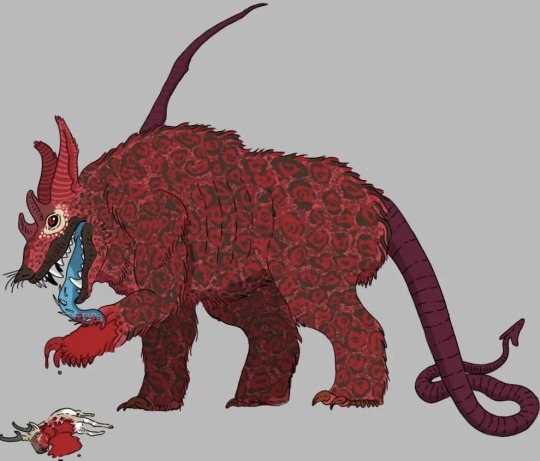

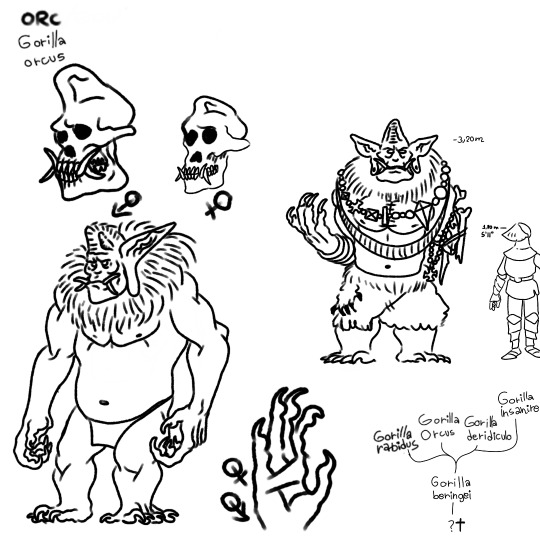
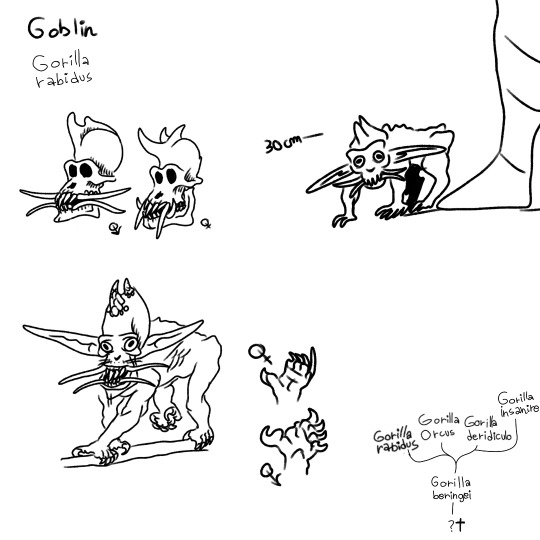
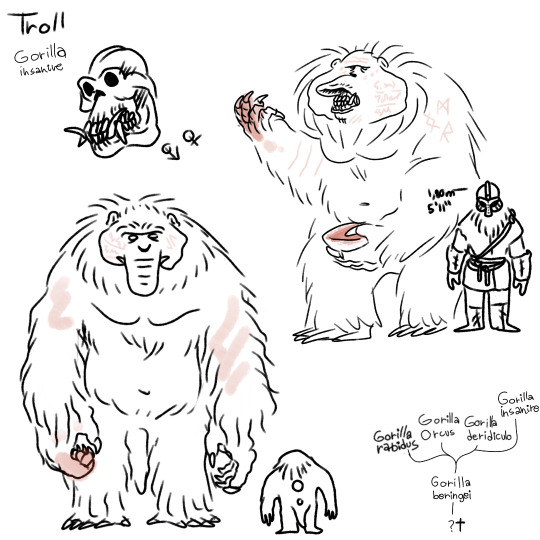
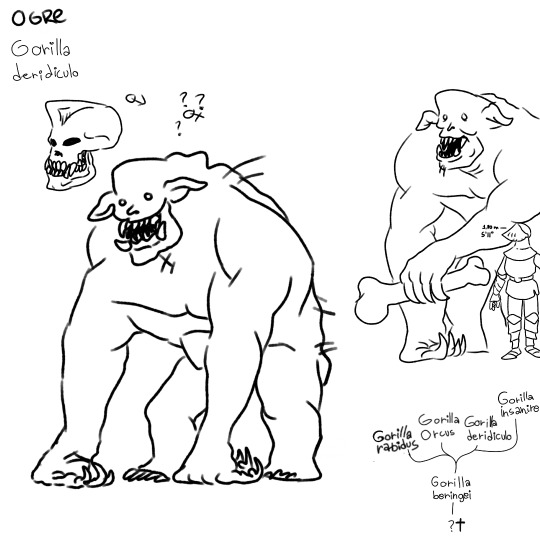
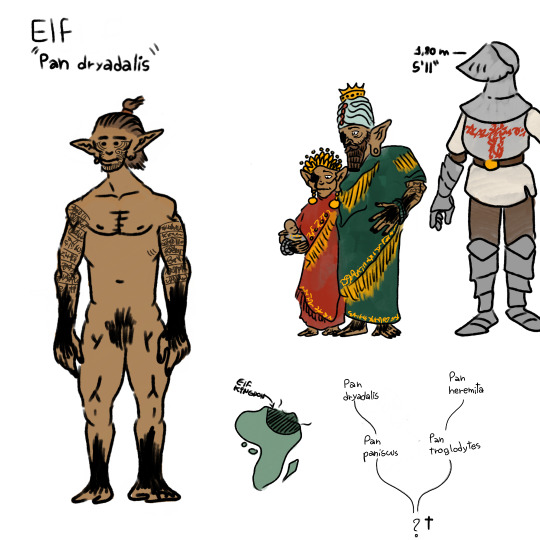
u/Critical_Cod2922
0 notes
Text
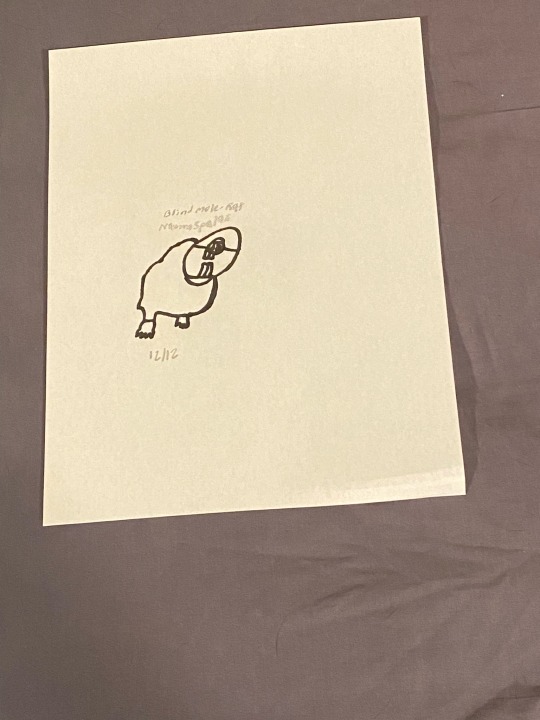
0 notes
Text
Have you heard about mole genders?

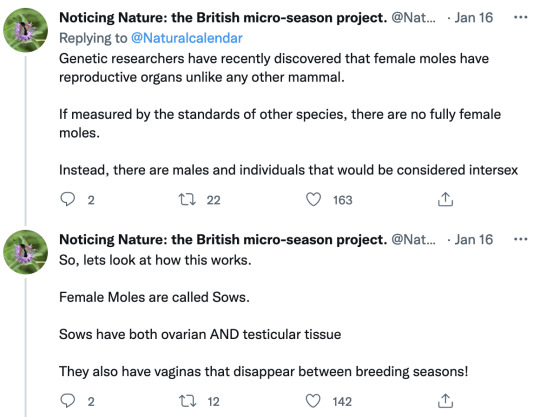




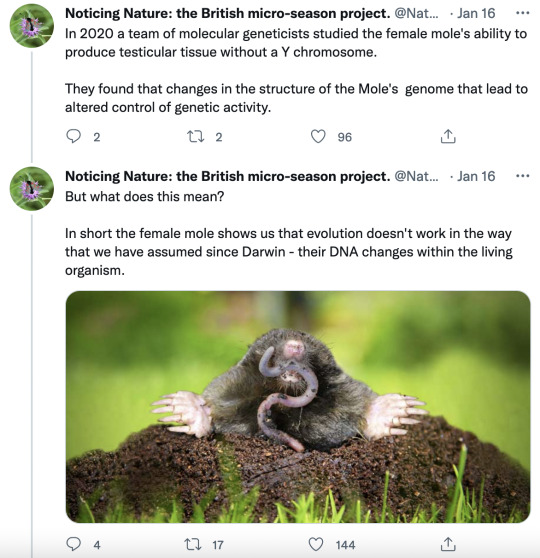
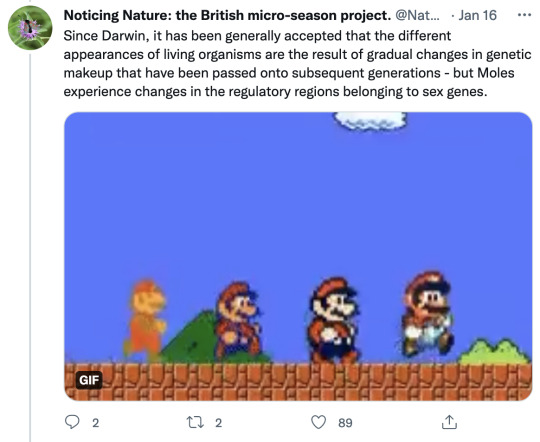
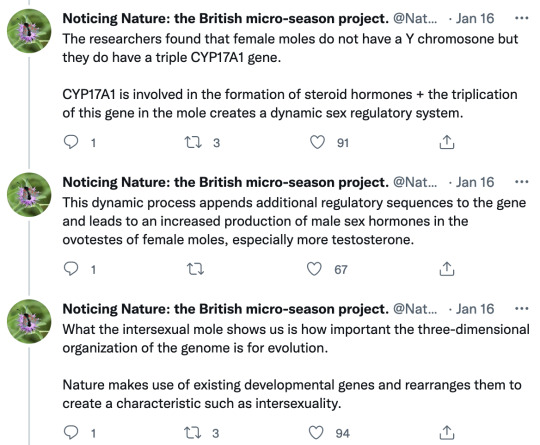

I’ve heard of this concept in sci-fi, but thought it was absolutely made up. I know some fish and frogs can change genders, but not in cycles like this. Wild. If I slapped this down in some alien world without explanation, I’d laugh in my own face. But no, real biology IS that bizarre.
Image descriptions:
A series of tweets from @NaturalCalendar that say:
Hello lovely Nature Noticers. It is time for today's thread! Follow me, and we'll delve deep into the subterranean and subversive world of Talpa europaea, the common European mole. We'll begin with a bombshell - there are no female moles.
Genetic researchers have recently discovered that female moles have reproductive organs unlike any other mammal. If measured by the standards of other species, there are no fully female moles. Instead, there are males and individuals that would be considered intersex.
So, lets look at how this works. Female Moles are called Sows. Sows have both ovarian AND testicular tissue They also have vaginas that disappear between breeding seasons!
Most of the year, female moles look and behave like males. They have masculinised genitals, with no external vagina + an enlarged clitoris. When this point in the year arrives, mating season begins. At this point the Sow's testosterone levels drop + they develop a vagina.
As is typical for mammals, Sows are equipped with two X chromosomes and Boars with an X and a Y chromosome. Unlike any other mammals Sows simultaneously develop functional ovarian and testicular tissues united in one organ, the 'ovotestis'. This is unique to Moles.
This testicular tissue does not produce sperm. It does however, produce large amounts of the sex hormone testosterone, meaning that Sows have similar testosterone levels to the Boars -except during mating season.
Scientists have hypothesized that these high levels of testosterone provide an adaptive advantage for the mole's underground life - providing added muscle mass for Sows who need to dig burrows and fight for resources for their offspring.
This is a dynamic process - the ovarian tissue that makes eggs and gets larger during breeding, then regresses. Outside of breeding season the testicular tissue, expands until it’s larger than the ovarian end - flooding the Sow's system with testosterone.
This explains why female moles have male-like genitalia... But it doesn't explain how patch of testicular tissue forms in female moles even though they do not have a Y chromosome. Up until recently the Y chromosome was thought to be fundamental to male sex determination.
In 2020 a team of molecular geneticists studied the female mole's ability to produce testicular tissue without a Y chromosome. They found that changes in the structure of the Mole's genome that lead to altered control of genetic activity.
But what does this mean? In short the female mole shows us that evolution doesn't work in the way that we have assumed since Darwin - their DNA changes within the living organism.
Since Darwin, it has been generally accepted that the different appearances of living organisms are the result of gradual changes in genetic makeup that have been passed onto subsequent generations - but Moles experience changes in the regulatory regions belonging to sex genes.
The researchers found that female moles do not have a Y chromosone but they do have a triple CYP17A1 gene. CYP17A1 is involved in the formation of steroid hormones + the triplication of this gene in the mole creates a dynamic sex regulatory system.
This dynamic process appends additional regulatory sequences to the gene and leads to an increased production of male sex hormones in the ovotestes of female moles, especially more testosterone.
What the intersexual mole shows us is how important the three-dimensional organization of the genome is for evolution. Nature makes use of existing developmental genes and rearranges them to create a characteristic such as intersexuality.
We see in the mole that evolution is not a linear process, arranged around the principle of Euclidian geometry. It is rather a topological process - a structure cast in rubber that is responsive and adaptive to the environment.
The mole also reminds us of the complexity of sexual development. The shifting sexual characteristics of the mole shows how the process of sexual development can, and does result in a wide range of natural variations.
#biology#gender#moles#fun animal facts#intersex#truth is stranger than fiction#yes I’ve read The Left Hand of Darkness#I’ve seen this idea elsewhere too#I had no idea it was based on something so exact#bonkers man#trans#mole genders
38K notes
·
View notes
Text
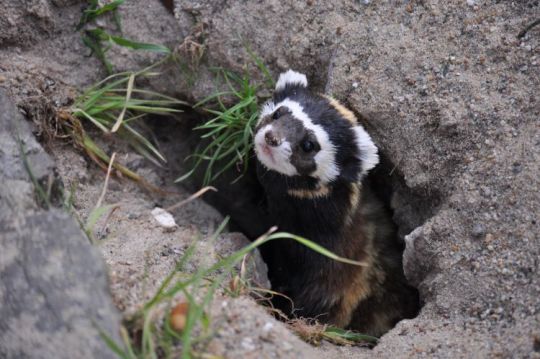
Marbled Polecat (Vormela peregusna)
Habitat & Distribution
Native to southern Europe and central Asia, from Serbia to northern China
Found in deserts, scrublands, and low steppe country
Physical Description
Weight: 295 to 715 g (10.4 to 25.2 oz)
Length: 29–35 cm (11.4 to 13.7 in)
The marbled polecat resembles other mustelids, with a long, slender body and a triangular face
The head is marked with black and white, and the body is yellow with mottled black spots
Behaviour
Marbled polecats rely on their sense of smell to find food, namely squirrels, hamsters, voles, mice, birds, lizards, and insects
Adults are solitary, and will defend their territories against rivals
They live in subterranean burrows, which can be self-dug or abandoned by other animals
Their main predators are larger mammals like foxes, and birds of prey
Key Advantages
Marbled polecats will adopt a defensive posture when threatened, arching their back and raising their tails
They may also emit a foul-smelling odor from their anal gland which can deter predators
Like other mustelids, they have sharp teeth and claws
Their keen sense of smell allows them to detect prey and avoid predators
Photo by Elias Neideck
105 notes
·
View notes
Text

Daggoths, with their subterranean lifestyles, unconventional limbs and even more peculiar senses, are easily among the most bizarre lineage ever to arise on HP-02017: a clade so derived as to look almost entirely alien. Yet, despite their otherworldy appearance, the daggoths are still mammals: giving birth to live young, and nourishing them with milk, at least for some period of time. And no other species combines the strange with the familiar as the spindled cheeseweaver (Lactarachne brevipus), a descendant of the roof stalac, an insectivore that dwells among the stalactites of the cave's ceiling, a biome obviously absent from the surface world.
Like its predecessor, the spindled cheeseweaver is an ambush hunter, pouncing on insects that it finds among the stone spikes. With long, spindly front digits, yet short, stubby rear ones, it ambles along predominantly with its forelimbs, while arching its back intermittently to secure its grip on another location, in a strange, nine-limbed inchworming gait. Its progress is helped along by broad pads on both fore and hind limbs that are equipped with thousands of tiny, densely packed hairs that allow it to stick tightly to even smooth surfaces, allowing it to negotiate the cavern roof, anchoring with its hind limbs while using its forelimbs to seize insect prey, be it feelerflits that blunder into its outstretched digits or other, flightless bugs that dwell on the rock surface, feeding on bacterial mats and fungi.
But easily the most remarkable characteristic of the cheeseweaver is the namesake ability the females have when rearing their young: they conceal their undeveloped, quasi-larval young in weblike cocoons that they affix to hidden crevices in the cave ceilings. These cocoons, reminescent of an arthropods', are perhaps the most unmammalian feature yet evolved by the daggoths, yet, conversely, is actually what ties the cheeseweaver to its mammalian ancestry: the webs are actually made of modified milk, and further taken to a bizarre extreme thanks to the fermentation and action of several species of symbiotic bacteria living in their mouths and plays a special role in the females.
In both sexes, these bacteria aid in an immune and digestive function, but in females, it contains just the right ingredients to make its silky webs. As daggoths rear their young for only a few days before they leave them, they produce particularly thick and concentrated milk rich in nutrients for their young, with high levels of protein to facilitate their quick growth. This feature is repurposed in this particular species, as when female cheeseweavers lactate, they do so shortly prior to birth, then use their long forelimbs to scoop up the creamy mixture into their cheek pouches. Here, the bacteria begin their work, separating out the proteins into a thick, stringy, and stretchy material after a period of at least 1-2 days that then, piece, by piece, the cheeseweaver female then pulls from her mouth in ropy threads and spins into a cocoon with her four pairs of fore-digits, stretching and spinning and weaving it in a disconcertingly arachnid-like manner into a protective pouch. Once finished, she inserts her rear end into the pouch, births anywhere from six to twelve tiny young each barely 4 millimeters long, and finishes it with a second layer of fibers to safely seal them inside a permeable shell that allows them to respire, as, at this point, the almost-embryonic young breathe entirely through their thin, vacularized skin that directly absorbs oxygen, as their lungs are not yet fully developed.
Once her job is finished, the female cheeseweaver conceals the cocoon with a lick of saliva that masks its scent and firms its adhesion to the surface, and then wanders off with no further care. She can spin several such cocoons during the breeding season, bearing her offspring in batches. The young, in turn, develop safely inside the cocoons, hidden away from predators that hunt mostly by scent. Inside, she has packed into the cocoons as well a rich reserve of the thick, fatty milk, semi-solidified to a soft, jelly-like consistency, to serve as a food source for the developing young. It is during this period that her symbiotic microbes again play an important role: they produce antimicrobial excretions that ward off pathogens and harmful bacteria that may infest the milk and harm the young, but which are tolerated by the beneficial bacteria that are then ingested by the young and become symbionts of them in turn. Once their teeth are fully matured, at the age of about two to three weeks, the young chew their way out of the cocoon and, after consuming the remainder of the empty husk, emerge out into the world, skilled hunters from day one that first practice on microscopic invertebrates before graduating to a diet of bigger insects as they progress toward adulthood.
-----------
And one final late-Spectember entry before schedule conflicts take over again. Sorry again to those who expected much content for Spectember, I hope you don't mind irregular random posting.
#speculative evolution#speculative biology#spec evo#speculative zoology#hamster's paradise#spectember
98 notes
·
View notes
Text
IN DEFENSE OF THE ALIEN DESIGNS IN STRANGE WORLD
@themousefromfantasyland @the-blue-fairie @tamisdava2 @minimumheadroom @thealmightyemprex @amalthea9 @angelixgutz @grimoireoffolkloreandfairytales @softlytowardthesun @grimoireoffolkloreandfairytales

So, I read on-line some comentaries saying that it was hard to connect to the titular Strange World because of how out of this world the alien creatures were.
Their designs were considered too strange, to the point of being considered scary by audiences, who expected those creatures to be intimidating monsters, rather than the neutral, if simpathetic beings they were portrayed as.
This characterization apparently didn't correspond to what is expected from their appearance.
And I started to investigate in my memory: why this disconect happened?
Why it was more easy to imagine those beings as villanous monsters, rather than the simple living beings they actually were portrayed as?
So, when it comes to other worldly creatures written in fantasy and science fiction works, since we are humans, it has historically been more easy to connect to alien fictional creatures that are closer to humans, or at least other mammals.
The more distant they looked from humans in appearance, usually closer to reptiles or insects, the more likely they were to be presented as villanous monsters that must be eliminated by the heroes.
In fantasy you have the usual conflicts between heroic and appealing humans, elves, dwarves and halflings against the villanous and grotesque orcs, goblins and trolls.

And in sci fi, the more sympathetic aliens are the ones that look close to humans, while the more far from humans that alien is, the more likely is that they will be the treat to be fought.
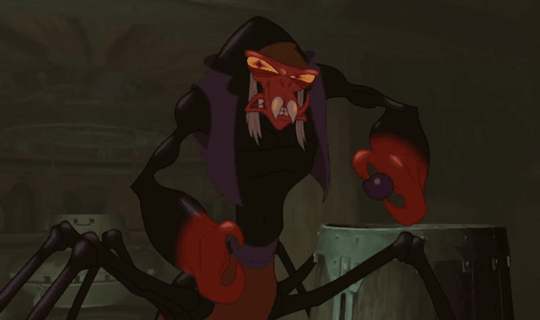
In the Lindsay Ellis video "Designing the Other", she brings up the important point on the emphasis on eyes to make audiences form a connection with an alien character.
When they have big, expressive humanoid eyes, they are more likely to win the audience's simpathy:
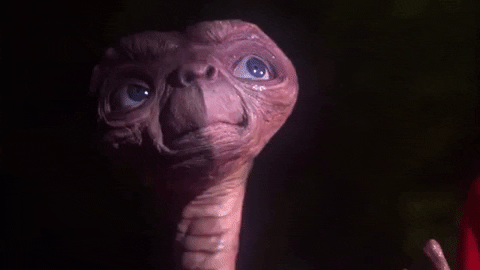
When their eyes are more insect like, or non existent, then they become mysterious, threatening monsters:

Jack Saint's video "Avatar: Dances with White Saviours" comments that the presentation of the planet Pandora and the native Na'Vi as conventionally beautifull is used as the main argument to make audiences simpathize with it and support its message of echological preservation

While less mainstream literary sci fi would present the message that even the non beautiful, even violent ecossystems and creatures are important for the balance of the enviroment and have the right to be preserved.
And then there is Strange World
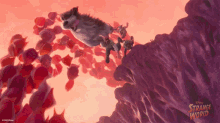
Strange World presents a story where a team goes trough the subterranean to save the plant that is their source of eletricity from creatures that they perceive as an agricultural plague.
The creatures follow the design pattern that we usually associate with monstrous, villanous aliens: far away from humans or other mammals, closer to insects, sea creatures and abstract cells.
We look at their appearance, and feel fear, treating them like abominations who would destroy us.
And the narrative knows that. Is an important discussion in the narrative.
When Jaegger joins the journey with the team, Ethan tries to show him and Searcher the card game Primordial Base, which is about finding peacefull solutions to live in harmony with the enviroment surrounding you, which includes the creatures you consider threatening eldritch abominations.
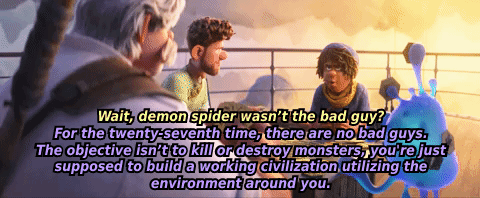
At first, Jaegger and Searcher fail to understand what Ethan says.
Then, they learn what his words means when they see that the supposed plague that they come to destroy was actually an imune system working to heal the living heart of their world, from Pando, the plant that for years they tought was beneficial.
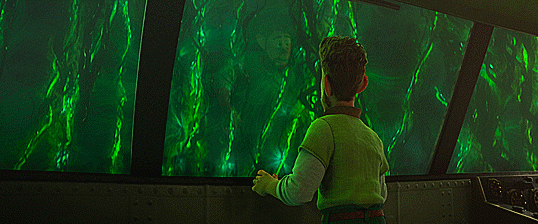
The saviours of their lives are the beings that they believed to be monsters.
Just because something is not what we perceive as beautiful, doesn't mean its evil.
That is the message that the characters had to learn to be alive.
And by extension, us, as the audience, had to examine our decades of biases on who is good, and who is bad, in the proccess.
Nature is neither good, nor bad. It doesn’t care about us.
It just is. That is enough reason that it needs to be respected and preserved.

31 notes
·
View notes
Text
Codex Entry #003 | "Angirasu Bōryū" (Anguirus)

[This Series is heavily inspired by Trollmans’ “FOLLY OF MAN” series on DeviantArt, so be sure to follow him if you enjoyed my work]
Species: Angirasu Bōryū (Anguirus)
Subtitle: The Indomitable Mountain
First Modern Sighting: December 30, 1956
Height: 90.24 Metres
Weight: 72,102.46 Tonnes
The Anguirus species are believed to be the first mammals to reach true gargantuan proportions. The species' ancestors are believed to be some of the earliest members of the Pholidota order, which notably contains pangolins; as such, the two species share many similarities. Though, many features are quite remarkably the results of convergent evolution. Similar traits allowed them to thrive in very different niches. Anguirus’ ancestors are believed to have been around the size of a medium dog before the K-Pg Extinction Event, evolving to large sizes sometime after. It is theorised that they became truly colossal to fill in empty niches left by Kaiju that either became extinct or dormant with the end of the Mesozoic. However, there is a shocking lack of transitional fossils to help understand the evolution of this kaiju. Only one other possible ancestral fossil has been discovered, an elephant-sized creature dating to only 57 million years ago. Such a radical growth is unusual, as this process would typically take tens of millions of years. Another abnormal peculiarity of the fossils is the fact that they were found in a large cavern a mile underground within the Yunnan Province of China. No other terrestrial mammal has been found to live this deep in caves, not to mention any food sources able to support an animal of this size. The Anguirus lineage seems to be a true anomaly within Earth’s ecosystem.
The species do seem to have quite a few traits that would benefit a subterranean lifestyle, though it is thought they may now be purely vestigial, as there is a very low possibility of any major terrestrial hyperfaunal ecosystems within the Earth’s crust. A few hyperfaunal researchers have suggested that the pseudoscientific “Hollow Earth Theory” may have some truth to it, but as of the current moment, all evidence remains superficial. Anguirus have powerful clawed arms that seem to be specialized for burrowing beneath the ground, in fact, they seem to be able to cut through buildings and even bedrock with relative ease. They also have somewhat poor eyesight, with bright lights shown to be effective in stunning them. This seems to be balanced out with incredibly strong hearing, meaning that modern cityscapes tend to disorient and anger them. Due to this, Anguirus primarily avoid human settlements, though it is unknown where they reside.
Anguirus have large whiskers covering much of their face, this paired with their powerful noses helps to locate food and water within the ground, this is theorised to be the purpose of some of their seemingly subterranean traits. Unlike most other kaiju, Anguirus seems to feed off of other living things, even when full-grown. The tongue and digestive system of the species seem to line up with primarily insectivorous animals, suggesting the existence of invertebrate kaiju. Despite Anguirus seemingly being adapted to eat hyperfaunal arthropods, Anguirus have sharp, conical teeth with an incredibly strong bite force (exact bite force is inconclusive) that allows them to grapple onto opponents with minimal effort, similar to the jaws of a crocodile. The agility of Anguirus cannot be understated either, despite their large and seemingly lumbering build, they are actually one of the fastest terrestrial kaiju, able to outrun most opponents. They can also jump to heights upwards of 250 metres, creating shockwaves as they hit the ground. Another very unique quality of Anguirus is their ability to roll into a ball and continue moving, even being shown to launch themselves into the air in this form.
The outward appearance of Anguirus alone can be presented as evidence to the trials its ancestors had to endure to grow to such towering heights. Such a drastic increase in size meant that these animals would have to deal with new threats and predators. Gradually, its ancestors had evolved to prevent injuries from attacks and fights through the formation of hair-derived scales along their bodies. Quite remarkably, these have been shown to have evolved independently from pangolins. In addition, some scales also have formed horn-like formations atop them. Several more horns can also be found along the back and side of their horns, as well as a nasal horn that is theorised to have possibly been an offensive adaptation. Recent tests have shown that the spiked plating along the back and head of Anguirus can absorb large amounts of heat and radiation and either disperse it through the air, or reflect it back towards its source, further studies into this could break ground in anti-kaiju defense and weaponry. A final offensive ability used by this species is the “ultrasonic roar”. Theorised to have once been used as a form of echolocation before being converted into an attack, the ultrasonic roar is loud enough to rupture the eardrums of some species, the soundwaves are even visible without any sort of specialised equipment.
The intelligence of Anguirus can often be compared to that of horses and other equids, due to a seeming ability to use body language, pheromones, grunts, snarls, and roars to communicate with other species it encounters. Anguirus have also been shown to have an incredible memory, as well as some level of advanced problem-solving. However, it is not common to see them demonstrate their intelligence due to being highly temperamental towards most species and having few issues that are unable to be solved with brute force alone. Although it is not unusual to see Anguirus living solitarily, it is thought from fossil ancestors that they may live in family groups, mated pairs, or small herds.
Well, I hope y'all have enjoyed the Anguirus codex entry for GODZILLA: Age of Monsters. I'm sorry for the long wait, I've been very busy with my freshman year of highschool. Expect new posts relatively soon, Age of Monsters will be undergoing a small soft reboot (Fixing the Godzilla design, creating a distinct style, changing a few story details, etc). As always, likes are appreciated, follows and repost even more so. Thanks for reading!
Tune in for more updates and future posts. Peace and love! ✌️🏽
#godzilla#kaiju#godzilla au#gojira#art#artwork#godzilla: age of monsters#kaiju redesign#godzilla fanart#anguirus#toho#toho monsters#daikaiju#toho kaiju#long post#long reads
52 notes
·
View notes
Text
I haven’t seen any yet so, can I interest you in some mole facts? Here’s 15 mole facts from around the internet:
1. Average Lifespan in the Wild: 3-6 years.
2. Their eyes are poorly developed, but what they lack in sight, they make up for in their sense of touch.
3. Moles play a beneficial role in the management of soil and the control of undesirable grubs and insects.
4. Some mole species are surprisingly good swimmers.
5. Moles are found on every continent except Antarctica and South America.
6. Consistent with a life spent underground, mole eyes are tiny and lack external ears, which could fill up with dirt.
7. Because of their cryptic nature and subterranean lifestyle, moles are some of the least-studied mammals. They are also frequently misunderstood.
8. Moles eat earthworms. In fact, they love earthworms so much that they can eat up to their own body weight in earthworms in one day. Handily, they also quite like insects and often eat the insects that damage the roots of plants.
9. Moles are about 15cm long and weigh about 130g, which is about the same as a bar of soap.
10. Moles are solitary creatures, except during the breeding season. After mating the female gives birth to a litter of up to five young during the summer.
11. The hairless mammal enjoys being in the grasslands, in gardens, burrowing in sand dunes or searching through the woodlands.
12. When moles eat earthworms, they keep them alive by biting off their heads (this keeps them immobile). FUN. It allows them to store them in chambers to feast on later. As many as 470 earthworms were once recorded in a chamber. (The Mammal Society).
13. The naked mole is not part of the mole family, it is part of the rodent family.
14. Moles can survive up to 18 minutes without oxygen.
15. Moles have twice as much blood as other mammals and they have more oxygen in their blood, which keeps them alive underground
This has been mole facts.
33 notes
·
View notes
Text
Moles are small mammals adapted to a subterranean lifestyle. They have cylindrical bodies, velvety fur, very small, inconspicuous eyes and ears, reduced hindlimbs, and short, powerful forelimbs with large paws adapted for digging.The word "mole" refers to any species in the family Talpidae, from the Latin word for mole, talpa. Moles are found in most parts of North America, Europe and Asia. Moles may be viewed as pests to gardeners, but they provide positive contributions to soil, gardens, and ecosystems, including soil aeration, feeding on slugs and small creatures that eat plant roots, and providing prey for other wildlife. They eat earthworms and other small invertebrates in the soil.
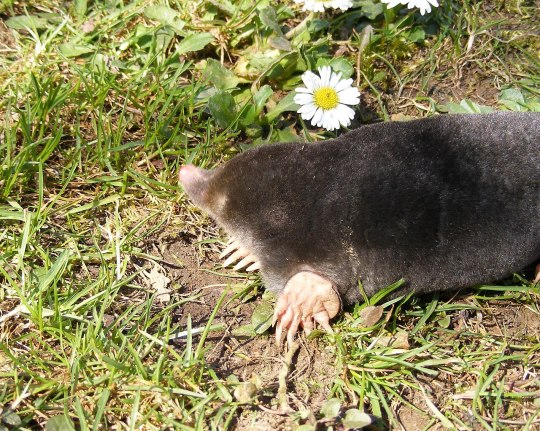
A European mole.
35 notes
·
View notes
Text
Scientists have identified two types of mole which they believe have been living undiscovered in the mountains of eastern Turkey for as many as 3 million years.
The new moles—named Talpa hakkariensis and Talpa davidiana tatvanensis—belong to a familiar group of subterranean, invertebrate-eating mammals found across Europe and Western Asia.
While only one species, Talpa europaea, is found in Britain, further east there are a number of different moles, many of which have very small geographical ranges.
The researchers—using cutting edge DNA technology—have confirmed the new forms are biologically distinct from others in the group.
Continue Reading.
48 notes
·
View notes
Note
📚, 🔱, 🐉 for Erra!
📚 BOOKS — what level of education has your oc most recently completed/is currently in (GED, undergraduate, grad school, phd, etc)?
Erra grew up amongst the Ashlanders of the Urshilaku Tribe and as a result never had a "formal" education within an institution. However, that didn't mean he never received an education. Kids within Urshilaku are taught by the elders and seers of the tribe. Mostly things that are useful for day-to-day living in the Ashlands as well as literacy skills. He's an expert marksman and has been using a bow since he was old enough to figure out how to pull the string taught. He specifically learnt how to shoot from a speeding mount and excelled at it(think mounted cavalry but it's on guar-back).
Erra was also taught the sacred texts of the Urshilaku back to back and can recite them from memory if prompted. He was essentially groomed for a high position within the Nerevarine Cult as a shield companion (the Incarnate's Honour Guard).
Erra was pretty much only taught using the Ashland variant of Dunmeris (which is essentially a separate language at this point with a few common words to link the two). So he had a very steep learning curve when he first started living in settled areas. Currently, Erra is fluent in Ashland- his native tongue, semi-fluent in Redoran Dunmeris and knows just enough Common Cyrodiilic to get him through a job working as a guide.
🔱 TRIDENT EMBLEM — can your oc swim? do they enjoy swimming?
There wasn't a lot of water in the Ashlands growing up and what water there was was either poisoned by volcanic ash, the blight or both. What little clean water the Urshilaku did have came from deep, subterranean aquifers and these would be used sparingly. Erra never learned to swim as a result.
🐉 DRAGON — what is your oc's favorite mythical creature?
...Less mythical and more just mythical to him. Erra is used to the wildlife of Morrowind, most of his experience is with reptiles and the giant arthropods that call the province home.
Since Erra first entered a market in Ald'Ruhn he's been fascinated by wool. The fact that you can make a fabric like that out of a creature's hair...or that a creature had hair that you'd actually want to weave fibre from amazes him (rats are about the extent of his knowledge with mammals).
Erra thinks sheep are mythical creatures is what I'm saying.
6 notes
·
View notes
Text

This was something that had always been on my mind since Zootopia came out, how it feels like there could've been a way to fit so many varied climates in a single location by having there be a mountain range, making the use of elevations, rainfall, and how dry winds can be left over on the other side of a mountain range
Obviously this is less fun than giant turbines and sprinklers, but I had always been interested in climates and maps as a kid, so I couldn't help but feel a tad disappointed when the movie revealed they achieved it all artificially, heh
It would be interesting to see more use of suspended trains and gondolas that connect each of these districts together, whether over the mountains or use of tunnels underneath, which could house an additional district for subterranean mammals who prefer the dark caverns
19 notes
·
View notes
Text
Pharaoh Cicada | Cicadas | Locusts #shorts #cicada #locust #cutecritters #bytesizeambs #truebug
I've been so excited about posting this YouTube short. The Pharaoh Cicadas (17 Year Locusts) are out! It is so amazing to watch them molt and just be.
NOTE: Video quality is better when watched via YouTube. Info on Pharaoh Cicadas in the description of this YouTube short.
EDIT: Since YouTube has decided to keep deleting the description on this one video, I'm posting it below.
We were fortunate enough to see several Pharaoh Cicadas (17 Year Locusts) molting last week. It was amazing to see and I was able to get one on video for this short.
Pharaoh Cicada (Magicicada septendecim)
The majority of the life of Magicicada septendecim is spent in an underground or subterranean habitat. The area in which a periodical cicada brood is located must contain a large population of deciduous trees, on whose roots the cicadas feed during the underground nymph stages. The trees are also necesary for the molt into adulthood, choruses, and egg-laying (Boyer 1996). (iNaturalist)
Habitat Regions: temperate ; terrestrial
Terrestrial Biomes: forest
Other Habitat Features: suburban
Cicadas can provide several environmental benefits, including:
Food source for predators: Cicadas are a valuable food source for birds, reptiles, insects, and mammals
Soil improvement: Cicada tunnels aerate the soil, and their decomposition adds nutrients to the soil
Tree pruning: Cicadas prune mature trees, which can lead to increased flowering and fruit production in the following year
Water filtration: Cicadas improve water filtration into the ground
#shorts #cicadas #locusts #pharaohcicada #bytesizeambs #bytesizeambsshorts
#bytesizeambs#youtube#youtube shorts#shorts#bytesizeambs shorts#amberlou#nature#hiking adventures#cute critters#loulouambrosia#cicada#cicadas#pharaoh cicada#17 year locust#locusts#cicadas molting#trending on YouTube#locust hatching
5 notes
·
View notes
Text
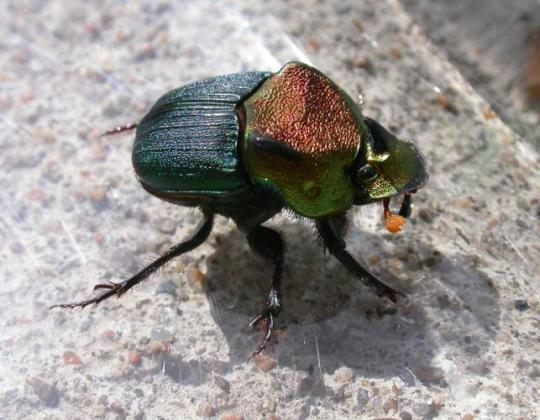
Rainbow Scarab (Phanaeus vindex)
Habitat & Distribution
Can occupy a range of habitats; most commonly found in pastures and grasslands
Found throughout the continental United States east of the Rocky Mountain Range, down to northern Mexico
Physical Description
Length: 11-22 millimeters (0.4-0.9 inches)
The body is round and stocky, and males have a large horn on their heads
Both males and females have iridescent, primarily green metallic shells, though the shells of females are more dull than males
Adults have wings that are hidden beneath the hard shell when not in use
Behaviour
Rainbow scarabs feed almost exclusively on dung, particularly that of large herbivorous mammals
Adults build extensive subterranean tunnels below food sources, and bury excrement for their larvae to feed on
Unlike other dung beetles, the rainbow scarab shapes faecal matter into pear-shaped balls
Rainbow scarabs are mostly solitary, and males will battle each other to defend their territories
Main predators are birds of prey, including the burrowing owl
Key Advantages
Though they mostly stay on the ground, rainbow scarabs are able to fly over short distances
The irridescent shell may confuse predators
Photo by Julianna Schroeder
77 notes
·
View notes
Note
You mentioned something in one of the asks about aquatic shroomors/meatmoss and daggoths being capable of limited underwater respiration? What are those species like?
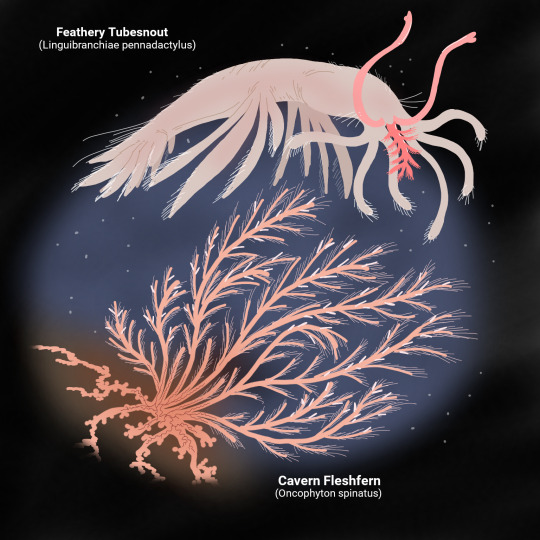
Many underground rivers and lakes pass through the Sub-Arcuterran cavern system, running for miles through its tunnels and chambers for great distance, their waterways slowly but surely eroding through rock, and expanding the subterranean network that for millennia has become a strange and alien world.
In this lightless realm, plants cannot survive, and thus the biosphere has rooted itself on the existence of chemosynthetic bacteria: a plentiful organism able to thrive without sun. Forming bacterial mats on walls and floors and on the water's surface, the bacteria have struck up a symbiosis with fungi, forming the mocklichens, but more recently with a far more unusual partner--meatmoss, a free-living, free-growing harmster tumor that has long since outlived its host and begun to grow much as a slime mold would.
Requiring moist environments to grow, some have taken to the water entirely: where both the meatmoss and its symbiont bacteria absorb necessary compounds from the water and from the surface it anchors to. As meatmoss respires through direct absorption of oxygen, aquatic meatmoss, such as cavern fleshfern (Oncophyton spinatus) have developed long, branching frond-like shapes to maximize the surface area for gas exchange, running along rock as webbed filaments but producing clusters of long tendrils that in essence serve as the whole organism's "gills". Cavern fleshfern also uses these fronds to reproduce, forming singular cells encased in capsules containing their symbiotic bacteria and releasing them into the water to settle and grow elsewhere where the currents of the water take them.
The abundance of fleshfern has not gone unnoticed by a group of aquatic daggoths: the tubesnouts. While most are filter-feeders that subsist of the floating mats of chemosynthetic bacteria and the micro-invertebrates that thrive on them, one species, the feathery tubesnout (Linguibranchiae pennadactylus), has taken up grazing on fleshfern that grows in large masses at the water's bottom. Like all mammals, feathery tubesnouts are air-breathers: their nostrils elongating into flexible built-in snorkels, their central nose tendril being greatly reduced to more easily reach the surface.
But the feathery tubesnout has a secret trick up its sleeve: its tongue, equipped with fringes that allowed its kin to filter-feed, has become highly vascularized, allowing it to absorb oxygen from the water. This is not a particularly efficient way to respire, even when aided by its slow metabolism and small size that greatly reduce its oxygen needs, but it can prolong its dives for up to three hours before needing to surface for air again. As such, propelled by undulations of its eight pairs of fin-like fingers and navigating with a combination of touch, hearing, and a strong sense of taste that functions much like smell when underwater, the feathery tubesnout grazes for hours on end at the bottoms of the subterranean ponds, chewing away at fleshfern fronds with the aid of its incisors--still unmistakably rodent-like ones that seem almost out of place on something so un-rodentlike.
This frequent grazing over millennia has incited a response from the fleshfern: to protect its reproductive and respiratory fronds, it has begun growing defensive measures on them to ward off attackers. These come in the form of thorn-like spikes, growing along the stems and branches of the fronds, much like the thorns of the stems of a plant. Yet it is almost easy to forget that the meatmoss is in fact an animal: made entirely of masses of undifferentiated cells, a new semblance of anatomical order has begun to arise from the chaos of a mass of free-living cancer cells from millions of years in their new lifestyle. Modified clumps of cells lining the fronds have developed the ability to produce keratinous sheaths from a long-hidden, latent ability to form specialized tissues akin to those of a more-organized animal: to defend itself, in the dawn of a strange new arms-race, a false plant has struck back with an analogue of botanical thorns--but are, in a structural sense, claws.
107 notes
·
View notes
Text
Is it “mole interest” as in, having an interest in subterranean mammals? Or “mole interest” as in, my subterranean mammals are accruing a percentage of profit on their investments because they’re good at the stock market?
7 notes
·
View notes